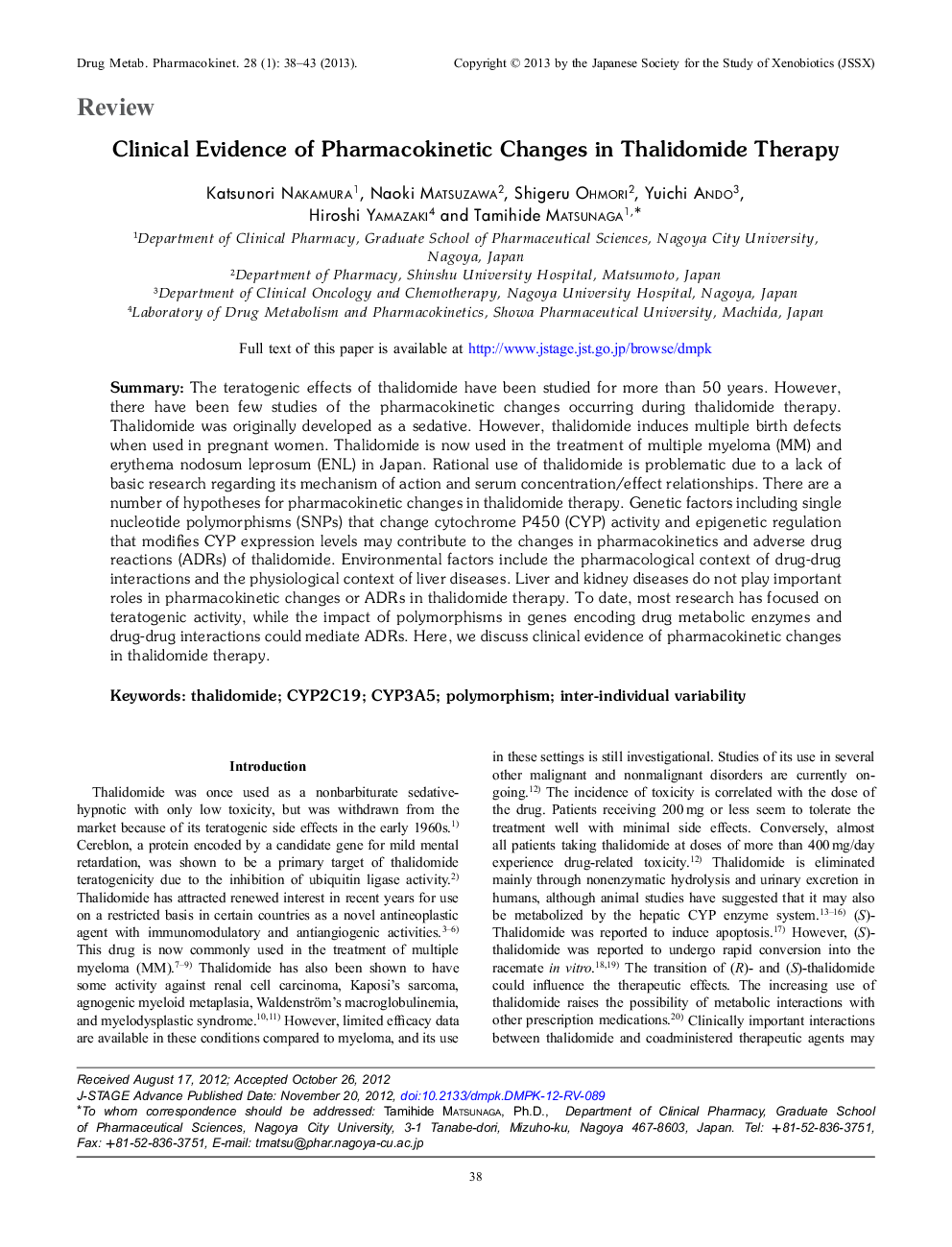| کد مقاله | کد نشریه | سال انتشار | مقاله انگلیسی | نسخه تمام متن |
|---|---|---|---|---|
| 2479053 | 1113420 | 2013 | 6 صفحه PDF | دانلود رایگان |

Summary:The teratogenic effects of thalidomide have been studied for more than 50 years. However, there have been few studies of the pharmacokinetic changes occurring during thalidomide therapy. Thalidomide was originally developed as a sedative. However, thalidomide induces multiple birth defects when used in pregnant women. Thalidomide is now used in the treatment of multiple myeloma (MM) and erythema nodosum leprosum (ENL) in Japan. Rational use of thalidomide is problematic due to a lack of basic research regarding its mechanism of action and serum concentration/effect relationships. There are a number of hypotheses for pharmacokinetic changes in thalidomide therapy. Genetic factors including single nucleotide polymorphisms (SNPs) that change cytochrome P450 (CYP) activity and epigenetic regulation that modifies CYP expression levels may contribute to the changes in pharmacokinetics and adverse drug reactions (ADRs) of thalidomide. Environmental factors include the pharmacological context of drug-drug interactions and the physiological context of liver diseases. Liver and kidney diseases do not play important roles in pharmacokinetic changes or ADRs in thalidomide therapy. To date, most research has focused on teratogenic activity, while the impact of polymorphisms in genes encoding drug metabolic enzymes and drug-drug interactions could mediate ADRs. Here, we discuss clinical evidence of pharmacokinetic changes in thalidomide therapy.
Journal: Drug Metabolism and Pharmacokinetics - Volume 28, Issue 1, 2013, Pages 38-43